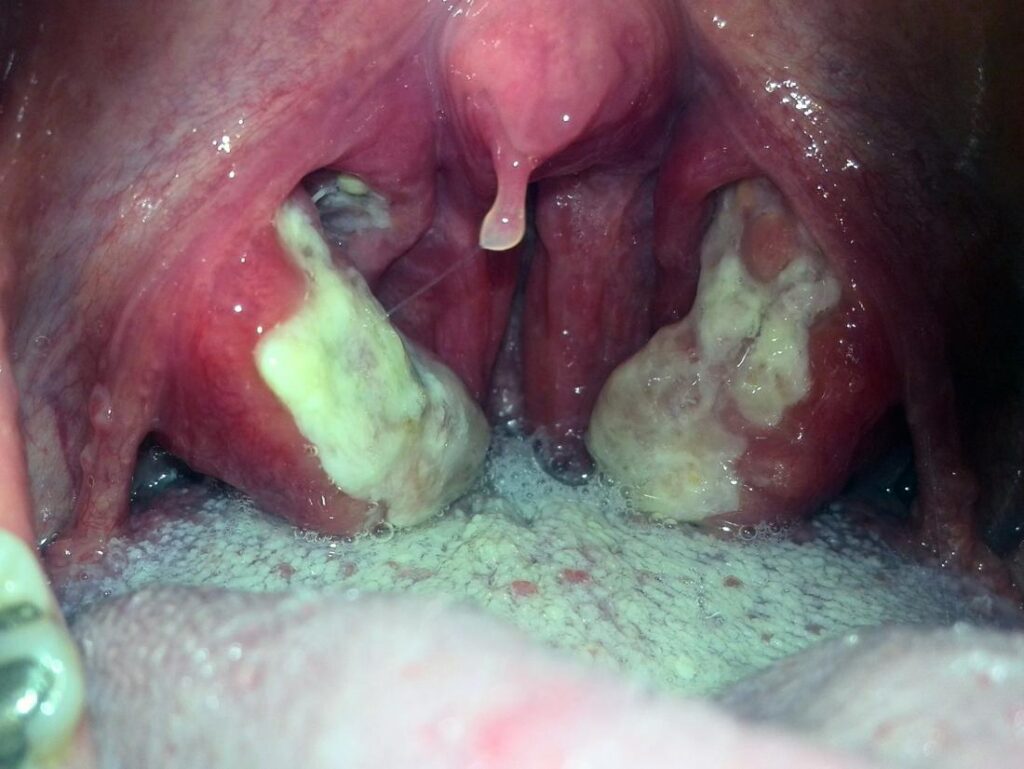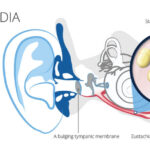Staphylococcal tonsillitis is an acute or chronic inflammation of the palatine tonsils caused primarily by Staphylococcus aureus, including methicillin-resistant strains (MRSA). While streptococcal infections are more commonly associated with tonsillitis, staphylococcal etiology should not be underestimated, especially in recurrent or treatment-resistant cases. Proper identification and targeted therapy are crucial to ensure complete recovery and avoid complications.

Understanding Staphylococcal Tonsillitis
Etiology and Pathogenesis
The pathogenic mechanism involves colonization of the tonsillar crypts by Staphylococcus aureus. These bacteria may enter through the respiratory tract, adhere to epithelial surfaces, evade immune responses, and produce toxins that damage host tissues.
Common Sources of Infection:
- Nasopharyngeal carriage of S. aureus
- Direct contact with infected individuals or contaminated surfaces
- Use of contaminated respiratory devices
- Poor oral hygiene or existing upper respiratory infections
Clinical Features and Symptoms
The presentation of staphylococcal tonsillitis may resemble other bacterial or viral forms, yet certain distinguishing features aid clinical suspicion.
Key Symptoms:
- Severe sore throat with difficulty swallowing
- High-grade fever and chills
- Red, swollen tonsils often with white or yellow exudates
- Halitosis (foul breath)
- Tender cervical lymphadenopathy
- Fatigue and general malaise
In MRSA-related tonsillitis, symptoms may persist despite standard beta-lactam antibiotic therapy and may present more aggressively.
Risk Factors and Vulnerable Populations
Patients at increased risk for staphylococcal tonsillitis include:
- Individuals with recurrent tonsillitis
- Immunocompromised patients (HIV, chemotherapy)
- Children in close-contact environments (schools, daycare)
- Healthcare workers or those with frequent hospital exposure
- Carriers of nasal or skin staph bacteria
Diagnostic Evaluation
Clinical Examination
A thorough oropharyngeal exam reveals inflamed tonsils, exudates, and signs of upper airway inflammation. Palpation of cervical lymph nodes may elicit tenderness and swelling.
Laboratory Testing
- Throat Swab Culture: Gold standard to identify S. aureus
- Rapid Antigen Tests: Typically for streptococcus but help rule out differential diagnoses
- Polymerase Chain Reaction (PCR): For rapid detection of MRSA genes
- Complete Blood Count (CBC): Shows leukocytosis in bacterial infections
Differentiation from viral tonsillitis is critical to avoid unnecessary antibiotic use.
Treatment of Staphylococcal Tonsillitis
First-Line Antibiotics
- For Methicillin-Sensitive S. aureus (MSSA):
- Dicloxacillin
- Cephalexin
- Amoxicillin-clavulanate
- For Methicillin-Resistant S. aureus (MRSA):
- Clindamycin
- Linezolid
- Trimethoprim-sulfamethoxazole (TMP-SMX)
Duration typically ranges from 7 to 10 days. Intravenous therapy may be warranted in severe or systemic cases.
Supportive Measures
- Adequate hydration
- Analgesics (e.g., acetaminophen, ibuprofen)
- Saltwater gargles and throat lozenges
- Soft, bland diet to minimize discomfort
Recurrent or Chronic Tonsillitis
In cases where staphylococcal tonsillitis recurs frequently or fails to respond to multiple antibiotic courses, further evaluation is required.
Management Strategies:
- Tonsillectomy: Considered in patients with ≥7 episodes per year or significant life interference
- Nasal Decolonization: Mupirocin ointment for nasal carriers of S. aureus
- Environmental Control: Sanitization of personal items, especially in MRSA cases
Differential Diagnosis
Staphylococcal tonsillitis must be distinguished from:
- Streptococcal tonsillitis (Group A beta-hemolytic strep)
- Viral pharyngitis (EBV, adenovirus, rhinovirus)
- Peritonsillar abscess
- Mononucleosis
Accurate microbial testing is essential for definitive diagnosis and effective treatment.
Potential Complications
Untreated or improperly treated staphylococcal tonsillitis can lead to:
- Peritonsillar abscess
- Retropharyngeal abscess
- Cervical lymphadenitis
- Systemic spread: sepsis, endocarditis (especially with MRSA)
- Post-infectious glomerulonephritis (rare)
Prompt antibiotic therapy and appropriate follow-up reduce the risk of progression.
Prevention and Hygiene Measures
Personal and Community Prevention
- Frequent handwashing
- Avoiding close contact with symptomatic individuals
- Regular disinfection of commonly touched items
- Use of disposable tissues and personal hygiene items
Carrier Control
- Screening for nasal carriers in chronic cases
- Topical decolonization with mupirocin
- Antiseptic throat washes in recurrent staph infections
Frequently Asked Questions
Can staphylococcal tonsillitis be contagious?
Yes. Transmission occurs through respiratory droplets, direct contact, or contaminated surfaces. Strict hygiene reduces risk.
How do I know if I have MRSA tonsillitis?
If symptoms persist after conventional antibiotics, a culture with sensitivity testing can determine MRSA involvement.
Is staphylococcal tonsillitis common?
It is less common than streptococcal tonsillitis but should be considered in recurrent or unresponsive infections.
Can tonsillitis caused by staph be treated without antibiotics?
Bacterial tonsillitis requires antibiotics. Supportive care alone is insufficient, especially for MRSA strains.
Staphylococcal tonsillitis, while less frequently diagnosed than streptococcal forms, poses significant clinical challenges, particularly with the rise of antibiotic resistance. Accurate microbial identification, prompt and targeted antibiotic therapy, and preventive strategies are vital in ensuring successful outcomes. Awareness of atypical presentations and chronic forms enhances clinical vigilance, reducing recurrence and systemic complications.

